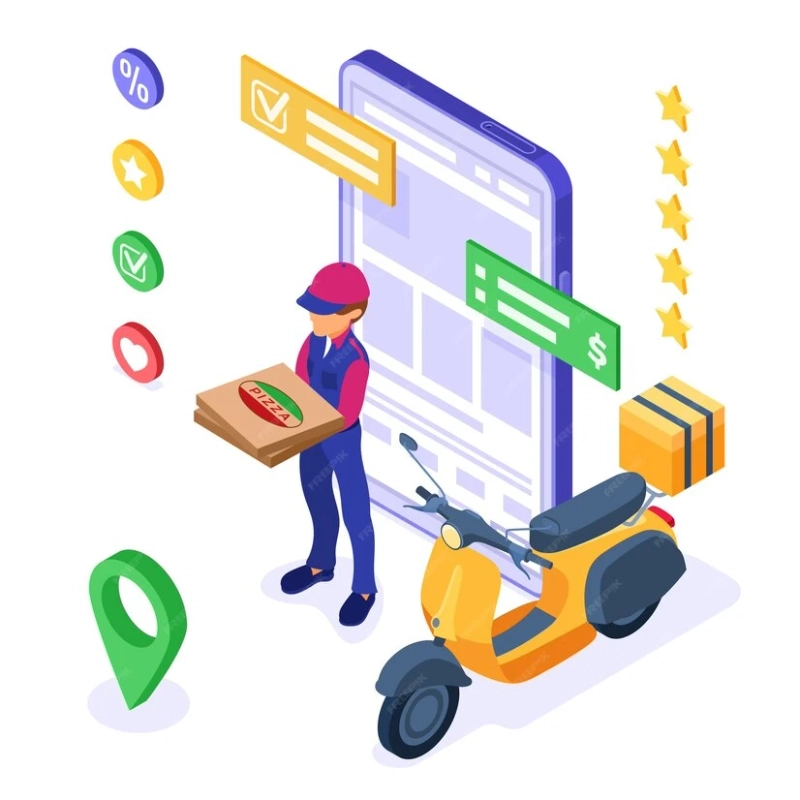In the age of convenience, delivery service apps have become indispensable, meeting the growing demand for on-demand services. If you're looking to tap into this lucrative market by developing and launching a delivery service app, this comprehensive guide will walk you through the essential steps from conception to launch.
1. Conduct Market Research
It is essential to carry out comprehensive market research before beginning development. Recognize your target market, evaluate your competition, and comprehend the state of the market today. Crucial aspects to pay attention to are:
Consumer Needs: What do potential users need from a delivery app?Market Gaps: What services are currently underrepresented?Competitor Analysis: Who are your main competitors, and what can you do better?This research will help you identify your unique selling proposition (USP) and shape your app’s features.
2. Define Your Business Model
Choosing the right business model is essential for your app's sustainability and profitability. Common models include:
Commission-Based: Charge a fee per transaction.Subscription-Based: Offer premium services for a monthly or yearly fee.Freemium: Provide basic services for free, with advanced features available for purchase.Advertisement-Based: Generate revenue through in-app ads.Select a model that aligns with your target audience and market research findings.
3. Plan Your App’s Features
To stand out in a competitive market, your app needs to offer valuable features that cater to user needs. Essential features include:
User-Friendly Interface: Ensure easy navigation and a pleasant user experience.Real-Time Tracking: Allow users to track their deliveries live.Multiple Payment Options: Offer various payment methods for user convenience.Ratings and Reviews: Enable users to rate and review their delivery experiences.Push Notifications: Keep users informed about their orders and promotions.Additionally, consider features like scheduled deliveries, contactless delivery options, and loyalty programs.
4. Choose the Right Technology Stack
The performance, scalability, and maintainability of your program will be impacted by the technology stack you select. Speak with experienced developers to determine which technologies are ideal for your project. The most common options consist of:
Frontend: React Native, Flutter for cross-platform development.Backend: Node.js, Django for robust server-side operations.Database: MongoDB, PostgreSQL for reliable data storage.Hosting: AWS, Google Cloud for scalable and secure hosting solutions.5. Develop Your App
Once you have your plan and technology stack in place, it’s time to develop your app. The development process typically involves:
Planning: Define the app’s architecture and workflow.Design: Create wireframes and UI/UX designs to visualize the app’s interface.Development: Write the code and integrate necessary features.Testing: Conduct thorough testing to identify and fix bugs and issues.To guarantee a high-quality solution, think about working with an experienced app development company or employing qualified developers.
6. Comply with Legal and Regulatory Requirements
Ensure your app complies with all legal and regulatory requirements in your region. This may include:
Business Licenses: Obtain necessary business licenses and permits.Health Permits: If delivering food, ensure compliance with health and safety regulations.Insurance: Secure insurance to protect your business and customers.Data Privacy: Adhere to data protection laws like GDPR or CCPA.Consult with legal experts to navigate these requirements and avoid potential pitfalls.
7. Beta Test Your App
Use a small user base for beta testing before the actual launch. This will assist you in getting insightful input, locating any problems that still exist, and making the required adjustments. Make sure the app is user-friendly, dependable, and fits the needs of the people who will be using it.
8. Launch Your App
It's time to release your software now that it's polished and ready. Formulate a thorough marketing plan to generate interest and draw customers. Important strategies consist of:
Social Media Marketing: Leverage platforms like Facebook, Instagram, and Twitter to reach potential users.Influencer Partnerships: Collaborate with influencers to promote your app.Email Marketing: Use email campaigns to inform potential users about your app’s features and benefits.Promotions and Discounts: Offer introductory discounts or promotions to encourage downloads and usage.Additionally, optimize your app store listing with relevant keywords, appealing visuals, and detailed descriptions to improve visibility.
9. Gather Feedback and Iterate
After launch, keep an eye out for areas that need improvement by asking users for input. Track user activity and performance metrics with analytics tools. Update your software frequently to address issues, include new features, and improve the user experience in response to user input.
10. Scale Your Business
As your app becomes popular, keep an eye out for chances to grow your company. Think about expanding your distribution regions, forming relationships with more suppliers, and looking into different sources of income. To stay competitive, be innovative and flexible in the face of shifting market conditions.
Conclusion
A delivery service app must be carefully planned, carried out, and improved upon over time. You will have no trouble developing a successful delivery app that caters to the needs of your target market if you follow step-by-step instructions. To succeed in the long run, stick with your plan, pay attention to what your users are saying, and continuously improve your software.


